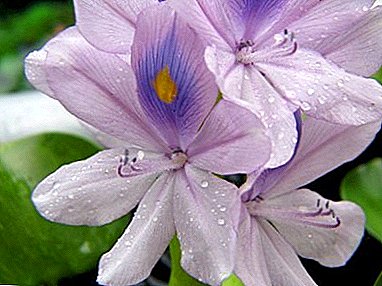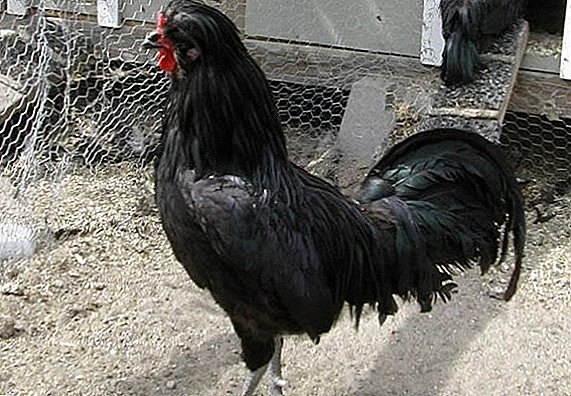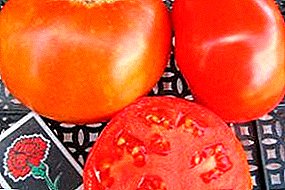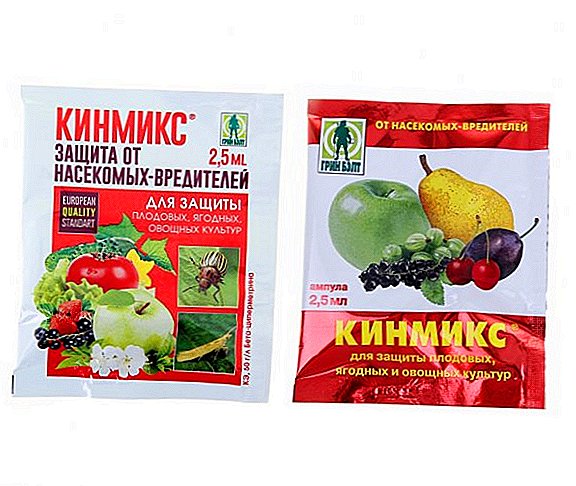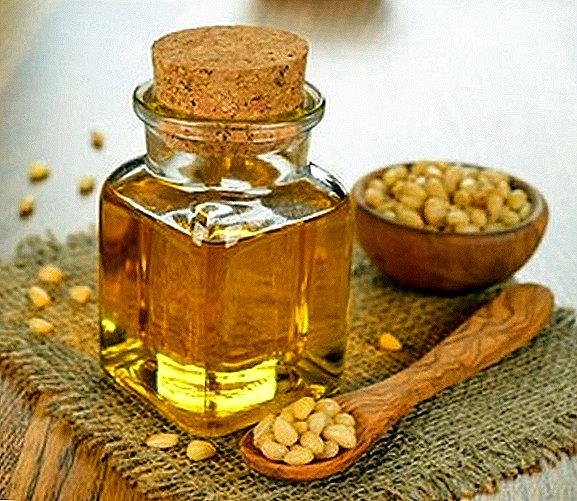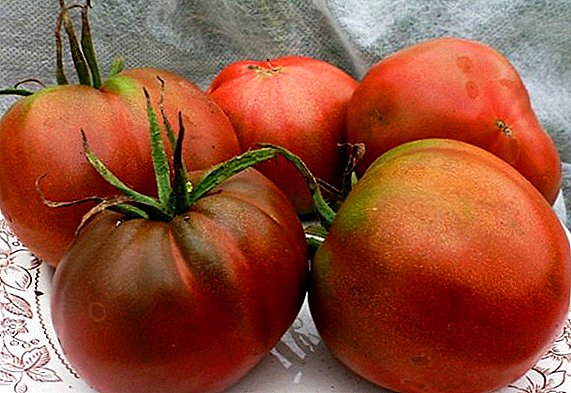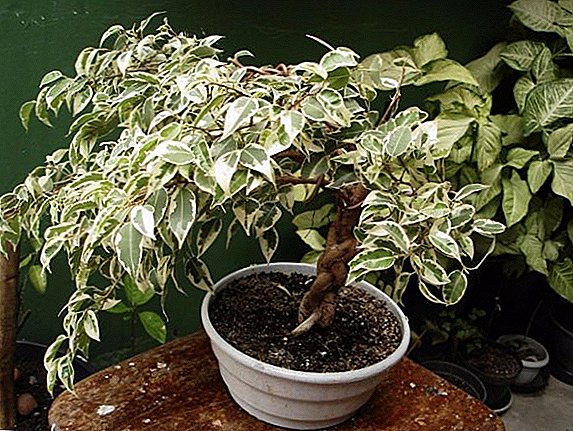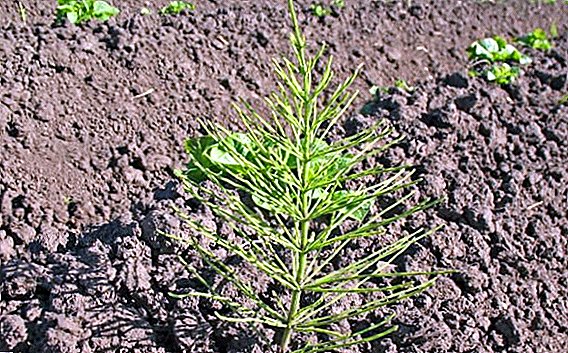 Such a well-known inhabitant of a garden and vegetable garden, like field horsetail, is also called tin grass, cat's eye, mop grass, whisk, horse tail. It is the basis for the manufacture of drugs that have an effective effect in the fight against gallstone disease, diarrhea, eczema, dermatitis, lichen and other diseases. But such a positive side of this grass is sharply contrasted with its biggest drawback - the horsetail is a garden weed, which is sometimes very difficult to get rid of.
Such a well-known inhabitant of a garden and vegetable garden, like field horsetail, is also called tin grass, cat's eye, mop grass, whisk, horse tail. It is the basis for the manufacture of drugs that have an effective effect in the fight against gallstone disease, diarrhea, eczema, dermatitis, lichen and other diseases. But such a positive side of this grass is sharply contrasted with its biggest drawback - the horsetail is a garden weed, which is sometimes very difficult to get rid of.
Plant description
Horsetail - This is a perennial spore grass that reaches a height of 40-50 cm. Weed has a long creeping rhizome, on which small tuber-shaped processes are formed, with the help of which vegetative propagation of grass occurs. Elevated shoots of plants are dimorphic, i.e. they are generative and vegetative.  Generative are presented in brownish or pink color, have brown leaf teeth in the shape of a triangle; vegetative - green, erect, empty, have a pointed tip. Weed propagation occurs spores, after maturation of which it dies completely. But after a few weeks the bushes turn green again. Then there is the formation of lateral branches, which apparently are practically indistinguishable from the type of vegetative processes.
Generative are presented in brownish or pink color, have brown leaf teeth in the shape of a triangle; vegetative - green, erect, empty, have a pointed tip. Weed propagation occurs spores, after maturation of which it dies completely. But after a few weeks the bushes turn green again. Then there is the formation of lateral branches, which apparently are practically indistinguishable from the type of vegetative processes.
Did you know? Horsetail is one of the oldest inhabitants of our planet, its age is approximately 400 million years, it is even older than dinosaurs.
Horsetail grows in the subarctic, temperate and tropical climate of Eurasia, throughout North America. The ideal conditions for it are sandy wetlands. Widespread in alternative medicine.
What is dangerous horsetail?
Besides the fact that this grass is an annoying weed and poisons the life of all gardeners, it should be remembered that poisonous. Horsetail spreads very quickly in the soil, it is enough to get several disputes in the ground, and next year expect a bountiful growth of this weed. At the same time, it is difficult to eradicate, even the most proven and popular tools do not always help with this problem. What is needed is a systematic approach and the use of integrated methods of dealing with this undesirable inhabitant of your vegetable garden. 
Methods of dealing with vegetation
By digging your garden every year, you may encounter the problem of finding signs of this weed. Its root processes are located at a depth of 40-60 cm, which is difficult to reach with an ordinary shovel. As a result, horsetail lives and grows in your garden. Only timely and systematic use of effective methods to combat it will help prevent its active dissemination. Consider a few ways.
Read also about how to bring out of the garden thistles, snyt, dandelion, nettle, birch, spurge, dodder, quinoa, hogweed, purslane.
Acidity reduction
Everyone knows that horsetail grows in soils with high acidity. Therefore, to get rid of it, this indicator must be gradually reduced. Remember that the process of reducing acidity is very long and can take from 5-6 months to a couple of years.
To do this, add dolomite flour, slaked lime or ash to the soil. Such components will help solve the problem. The main thing is to correctly calculate the dosage: 2-3 kg of limestone per 1 square meter in the first year and 500 g in the second or third year. If we combine the procedure of lowering the acidity with the implementation of regular weeding, then in a few years the problem of this weed will disappear forever. 
Did you know? In Japan, horsetail stems are boiled in a special way, and they are used to polish wooden objects of applied art, which gives them a refined and unusual shine.
Chemicals
Horsetail is classified as a herbaceous plant, not having flowers and breeding spores. In order to completely get rid of him in the garden, use herbicides that kill various types of weeds. Most of their varieties belong to the ІV class according to the danger of substances and are harmless to such beneficial insects as bees. This kind of drugs block the synthesis of aromatic amino acids that occurs in this herb. As a result, the weed gradually dies off and dies.
To combat weeds, gardeners use drugs: Prima, Ground, Zencor, Stomp, Agrokiller, Lontrel-300.
Exercise herbicide treatment in the evening. Especially good condition will be the presence of calm weather without wind and rain.
When processing, be sure to put rubber gloves on your hands to protect them from damage by chemical substances. It is not recommended to spray the weed in rainy weather, as well as during the dry season. Handle only actively growing weeds. If, after harvesting, you notice that new shoots have appeared - immediately destroy them. In this way, you will make weed control easier next year.  Since this parasitic herb is located deep in the soil and has good defense mechanisms, the action of herbicides is not always effective. Such common among gardeners drugs like Roundup, Tornado and other varieties do not have the desired and expected effect. Moreover, from the experience of many gardeners, it can be concluded that even after triple treatment of the weed with Roundup during one season, no signs of disappearance or reduction of horsetail spread were observed.
Since this parasitic herb is located deep in the soil and has good defense mechanisms, the action of herbicides is not always effective. Such common among gardeners drugs like Roundup, Tornado and other varieties do not have the desired and expected effect. Moreover, from the experience of many gardeners, it can be concluded that even after triple treatment of the weed with Roundup during one season, no signs of disappearance or reduction of horsetail spread were observed.
Important! It is possible to get rid of this herb using potent herbicides ("Glyphos" or "Titus") with a high content of a chemical (about 10 liters per hectare). But this way you increase the likelihood that harmful substances will get into both the soil and the crop itself.
Biological methods
If you are thinking about how to get rid of horsetail in the garden, then you will come to the rescue family Cruciferous plants. His representatives - the worst enemies for horsetail, he does not tolerate the location next to them.  If you have noticed the prerequisites for the emergence of weeds in your own garden, then the next season be sure to plant cruciferous seeds. This is due to the fact that they have special secretions from rhizomes that can suppress weeds. This method will lead to the almost complete disappearance of annoying horsetail.
If you have noticed the prerequisites for the emergence of weeds in your own garden, then the next season be sure to plant cruciferous seeds. This is due to the fact that they have special secretions from rhizomes that can suppress weeds. This method will lead to the almost complete disappearance of annoying horsetail.
It is worth trying another method of dealing with a plant - mulching or sheltering with black plastic wrap of the places where it grows. You can use organic and inert materials. Drain on areas of soil where the moisture level exceeds the norm.
The Cabbage or Cruciferous family includes: cabbage, radish, alissum, horseradish, arugula, mustard, katran, and rape.
Few of the beneficial properties
The field horsetail became famous as a real "healer" due to its unique healing properties.  The herb is widely used as an anti-inflammatory and diuretic for pain in the bladder and kidneys, it has a cardiotonic and general strengthening effect. Infusions from such a plant, firstly, establish metabolic processes, and secondly, rid the body of excess fluid, thereby reducing edema of the body and internal organs.
The herb is widely used as an anti-inflammatory and diuretic for pain in the bladder and kidneys, it has a cardiotonic and general strengthening effect. Infusions from such a plant, firstly, establish metabolic processes, and secondly, rid the body of excess fluid, thereby reducing edema of the body and internal organs.
Reception of the extract of this herb activates the metabolic processes that take place in the nail plates and hair. Many studies show the effectiveness of horsetail in the process of removing from the human body the excess of various harmful substances that slow down its work.
In alternative medicine also used a decoction of horsetail for the manufacture of compresses to treat depriving, deep cuts and wounds, boils. In the broth warm temperature can bathe very cold children to reduce the temperature and get rid of all the symptoms.
Remember that horsetail can cause a strong irritable reaction of the kidneys, if used in nephrosis and nephritis. In no case do not take drugs that include this plant, without a doctor's prescription. Only a cautious attitude towards him can prevent any complications.  It is also dangerous for farm animals, as many cases of their poisoning have been observed. Horsetail is very toxic to humans if consumed in large doses.
It is also dangerous for farm animals, as many cases of their poisoning have been observed. Horsetail is very toxic to humans if consumed in large doses.
Important! If you have used a folk remedy, the main ingredient of which is field horsetail, and you feel dizzy, you feel nauseous or you see excessive perspiration, you should urgently rinse your stomach with a low-concentration solution of manganese and seek help from specialists.
Horsetail - an annoying weed and a healing plant. Many gardeners each spring are faced with the problem of how to deal with the ever-growing horsetail in his garden. For this purpose, we regularly soil the soil, process it with various chemicals, and mulch it, and even plant the horsetail “enemies” in the same area as it. All to get rid of this pest.
And only systematic and comprehensive measures can help in this. At the same time, there are a large number of folk recipes that use field horsetail as the main ingredient. He has long established himself as an excellent healer from many diseases and ailments.



